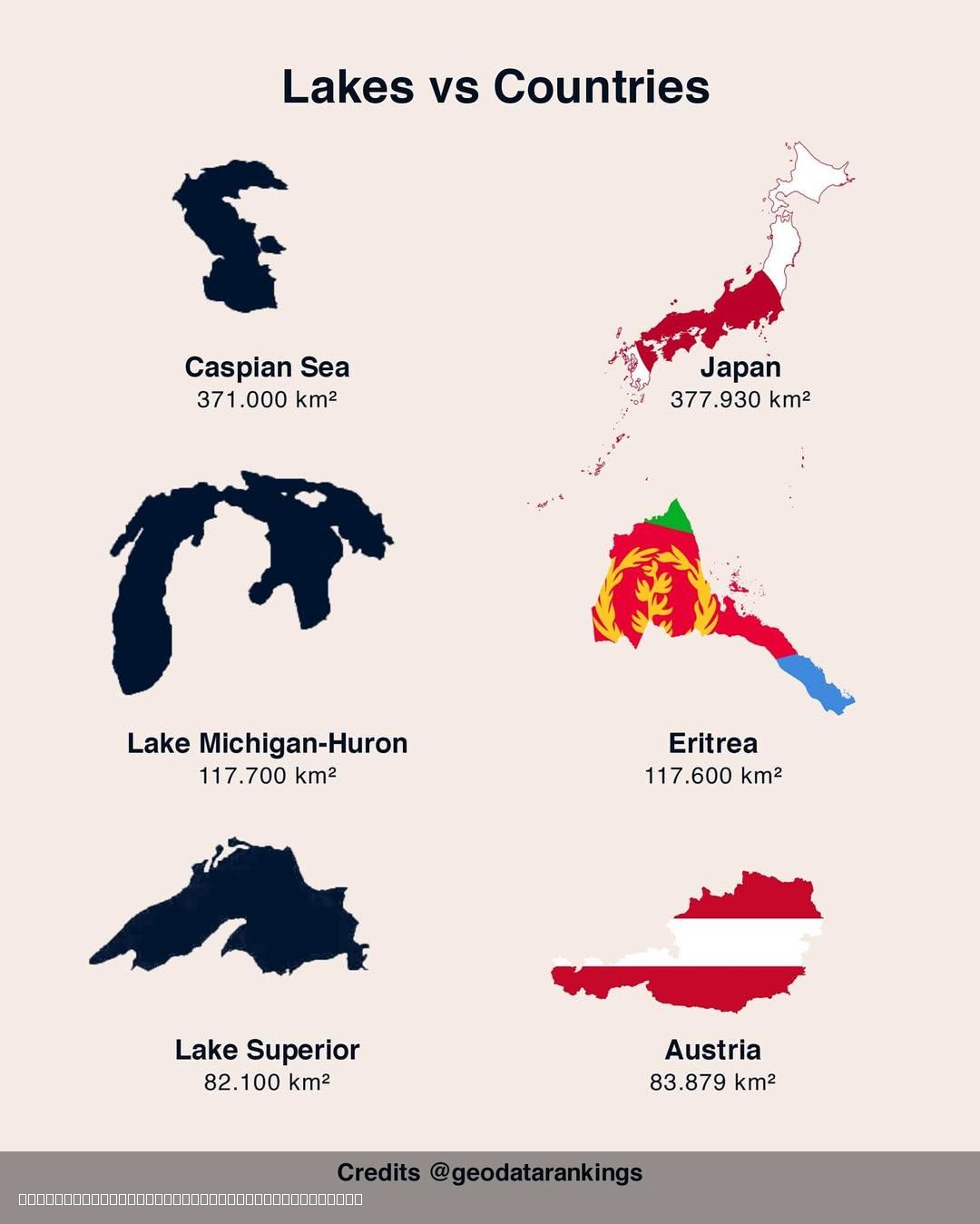Lakes and Countries Size Comparison Map


Marcus Rodriguez
Historical Geography Expert
Marcus Rodriguez specializes in historical cartography and geographic data analysis. With a background in both history and geography, he brings unique...
Geographic Analysis
What This Map Shows
The "3 Lakes vs 3 Countries Size Comparison Map" offers a compelling visual representation that juxtaposes the sizes of three significant lakes against three countries. It aims to provide a clear understanding of scale and magnitude, helping us visualize just how vast these bodies of water are in relation to the landmass of entire nations. The lakes chosen for this comparison are notable not only for their beauty but also for their ecological and geographical significance. This map allows us to appreciate the sheer size of lakes such as the Caspian Sea, Lake Superior, and Lake Victoria alongside countries like Italy, Germany, and the United Kingdom.
Deep Dive into Lakes
Lakes are fascinating geographical features that play critical roles in our ecosystems and human activities. They serve as reservoirs of freshwater, habitats for diverse wildlife, and sources of recreation and tourism. Interestingly, lakes can often be overlooked compared to rivers or oceans, yet their importance cannot be understated. For instance, the Caspian Sea, despite being called a sea, is the world’s largest enclosed inland body of water. Covering an area of about 371,000 square kilometers (143,000 square miles), it surpasses the size of many countries, making it a unique case study in geography.
Lake Superior, the largest of the Great Lakes in North America, spans approximately 82,100 square kilometers (31,700 square miles). This immense body of water is not just a natural wonder; it also supports various economic activities, including shipping and fishing. Lake Victoria, the African giant, is the largest lake by area in Africa and the second-largest freshwater lake in the world, measuring about 68,800 square kilometers (26,600 square miles). Home to the largest tropical lake in the world, it’s vital for millions of people who depend on it for their livelihoods.
Lakes influence local climates and ecosystems significantly. They can act as moderating influences on temperature, often resulting in milder winters and cooler summers in surrounding areas. Moreover, they are crucial for biodiversity; many lakes support unique fish species and aquatic plants that cannot be found anywhere else.
Regional Analysis
When we analyze the regions represented in this map, we notice distinct characteristics that define each lake and its surrounding environment. For example, the Caspian Sea borders five countries—Russia, Kazakhstan, Turkmenistan, Iran, and Azerbaijan—each with varying impacts on its ecology and economy. The region is rich in resources, particularly oil and gas, leading to both environmental concerns and economic opportunities.
Lake Superior, located in the United States and Canada, is part of the Great Lakes system and is integral to the economy of the Great Lakes region. The lake is surrounded by national parks and preserves, highlighting its importance not just as a resource, but also as a recreational space. The surrounding areas have seen significant urban development that has sometimes threatened the lake’s health, raising questions about sustainable management practices.
In contrast, Lake Victoria, encircled by Uganda, Kenya, and Tanzania, faces challenges including pollution, invasive species, and overfishing. The lake’s health is crucial for the livelihoods of millions, yet it is under threat from human activity and climate change. Each of these lakes presents a unique case study that illustrates how geography shapes human interaction with the environment, as well as the challenges faced by these ecosystems.
Significance and Impact
The size and health of lakes are not just matters of geographical curiosity; they have real-world implications for biodiversity, climate resilience, and human economies. Lakes are vital sources of freshwater, and as global populations continue to grow, the demand for clean water will only increase. Furthermore, climate change poses significant risks to these ecosystems. Changes in precipitation patterns can lead to fluctuating lake levels, impacting both the environment and the communities that rely on these water sources.
Interestingly, as we witness shifts in climate, the future of these lakes may be uncertain. For example, Lake Superior is projected to experience changes in ice cover and water temperature, which can affect fish populations and local ecosystems. Meanwhile, the Caspian Sea is facing rising salinity levels, which could have profound effects on its aquatic life. In the case of Lake Victoria, it has been reported that invasive species and pollution are leading to a decline in native fish populations, threatening food security for millions.
Ultimately, understanding the scale and significance of lakes in comparison to countries helps us recognize their value and the need for sustainable practices to protect these critical resources. As we reflect on this map, let's consider how we can contribute to preserving these natural wonders for future generations.
Visualization Details
- Published
- August 5, 2025
- Views
- 146
Comments
Loading comments...